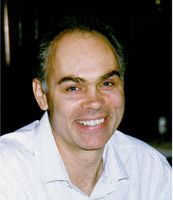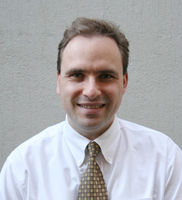North Auckland > Public Hospital Services > Te Whatu Ora – Health New Zealand Waitematā >
Cardiology Services | Waitematā | Te Whatu Ora
Public Service, Cardiology
Description
Formerly Waitematā DHB Cardiology Services
What is Cardiology?
Cardiology is the specialty within medicine that looks at the heart and blood vessels. Your heart consists of four chambers which are responsible for pumping blood to your lungs and then the rest of your body.
The study of the heart includes the heart muscle (the myocardium), the valves within the heart between the chambers, the blood vessels that supply blood (and hence oxygen and nutrients) to the heart muscle, the pericardium that envelops the heart and the electrical system of the heart which is what controls the heart rate.
Consultants
-

Dr Nezar Amir
Cardiologist
-

Dr Guy Armstrong
Cardiologist/Interventionist
-

A/Prof Jonathan Christiansen
Cardiologist/Chief Medical Officer
-

Dr Colin Edwards
Cardiologist
-

Dr Seif El-Jack
Cardiologist/Chief Interventionist
-

Dr Shawn Foo
Cardiologist/Electrophysiologist
-

Dr James Fu
Cardiologist
-

Dr Andrew Gavin
Cardiologist/Electrophysiologist
-

Dr Patrick Gladding
Cardiologist
-

Dr Timothy Glenie
Cardiologist/Interventionist
-

Dr Ali Khan
Cardiologist/Interventionist
-

Dr Gary Lau
Cardiologist
-

Dr Hitesh Patel
Cardiologist
-

Dr Tony Scott
Cardiologist/Clinical Director, Cardiology Service
-

Dr Andrew To
Cardiologist/Director of Cardiac CT & Echocardiography
-

Dr Denise van der Linde
Cardiologist
-

Dr Bernard Wong
Cardiologist/Interventionalist
Referral Expectations
Your General Practitioner (GP) will refer you to one of our clinics if they are concerned about your heart and want a specialist opinion.
If you have an urgent problem requiring immediate cardiological assessment, you are referred to the acute General Medical Services where you will initially be seen by the Registrar (trainee specialist) who will decide whether you need to be admitted to hospital. Investigations will be performed as required, and the more senior members of the team involved where necessary.
If the problem is non-urgent, the GP will write a letter to the Cardiology Department requesting an appointment in the outpatient clinic. Each month the Department receives more referrals than can be seen in clinic. One of the consultant cardiologists working in the Department reviews these letters to determine who should be seen first, based on the information provided by the GP. Very urgent cases are usually seen within two weeks, but other cases may have to wait longer. Once you receive your appointment you will need to stay in touch with your GP and any change in your symptoms or concerns in regards to your heart condition should be promptly relayed to them.
- Any letters or reports from your doctor or another hospital.
- Any X-Rays, CT or MRI films and reports.
- All medicines you are currently taking including herbal and natural remedies.
- Your pharmaceutical entitlement card.
You will be seen by a member of the cardiology team who will ask questions about your illness and examine you to try to determine or confirm the diagnosis. This process may also require a number of tests (e.g. blood tests, x-rays, scans etc). Sometimes this can all be done during one clinic visit, but for some conditions this will take several follow-up appointments. In many cases the requested investigations will be arranged and you will be called by our departments accordingly. Your specialist will follow-up on your results and contact you or your GP.
Common Conditions / Procedures / Treatments
An ECG is a recording of your heart's electrical activity. Electrode patches are attached to your skin to measure the electrical impulses given off by your heart. The result is a trace that can be read by a doctor. It can give information of current or previous heart attacks or problems with the heart rhythm. Depending on your history, examination and ECG, you may go on to have other tests.
An ECG is a recording of your heart's electrical activity. Electrode patches are attached to your skin to measure the electrical impulses given off by your heart. The result is a trace that can be read by a doctor. It can give information of current or previous heart attacks or problems with the heart rhythm. Depending on your history, examination and ECG, you may go on to have other tests.
An ECG done when you are resting may be normal even when you have cardiovascular disease. During an exercise ECG the heart is made to work harder so that if there is any narrowing of the blood vessels resulting in poor blood supply it is more likely to be picked up on the tracing as your heart goes faster. For this test you have to work harder which involves walking on a treadmill while your heart is monitored. The treadmill gets faster with time but you can stop at any time. This test is supervised and interpreted by a doctor as you go. This test is used to see if you have any evidence of cardiovascular disease and can give the doctor some idea as to how severe it might be so as to direct further tests and possible treatment.
An ECG done when you are resting may be normal even when you have cardiovascular disease. During an exercise ECG the heart is made to work harder so that if there is any narrowing of the blood vessels resulting in poor blood supply it is more likely to be picked up on the tracing as your heart goes faster. For this test you have to work harder which involves walking on a treadmill while your heart is monitored. The treadmill gets faster with time but you can stop at any time. This test is supervised and interpreted by a doctor as you go. This test is used to see if you have any evidence of cardiovascular disease and can give the doctor some idea as to how severe it might be so as to direct further tests and possible treatment.
An ECG done when you are resting may be normal even when you have cardiovascular disease. During an exercise ECG the heart is made to work harder so that if there is any narrowing of the blood vessels resulting in poor blood supply it is more likely to be picked up on the tracing as your heart goes faster. For this test you have to work harder which involves walking on a treadmill while your heart is monitored. The treadmill gets faster with time but you can stop at any time. This test is supervised and interpreted by a doctor as you go. This test is used to see if you have any evidence of cardiovascular disease and can give the doctor some idea as to how severe it might be so as to direct further tests and possible treatment.
You are likely to have blood tests done before coming to clinic to check your cholesterol level and looking for evidence of diabetes. These blood tests are done "fasting" which means you have the blood taken in the morning on an empty stomach before breakfast.
You are likely to have blood tests done before coming to clinic to check your cholesterol level and looking for evidence of diabetes. These blood tests are done "fasting" which means you have the blood taken in the morning on an empty stomach before breakfast.
Echocardiography is also referred to as cardiac ultrasound. This test is performed by a specially trained technician. Your cardiologist will review the study after it is completed. This test utilises high frequency sound waves to generate pictures of your heart. During the test, you generally lie on your back and gel is applied to your skin to increase the conductivity of the ultrasound waves. A technician then moves the small, plastic transducer over your chest. The test is painless and can take from 10 minutes to an hour. In some circumstances, echocardiography needs to be performed by inserting a tube from the mouth into the swallowing tube (oesophagus). This technique is performed by a trained cardiologist; the procedure is called transoesophageal echocardiography. At the end of the study, the heart images are analysed using complex computer software. Echocardiography can help in the diagnosis of many heart problems including cardiovascular disease, previous heart attacks, valve disorders, weakened heart muscle, holes between heart chambers and fluid around the heart (pericardial effusion). If doctors are looking for evidence of coronary artery disease they may perform variations of this test which include: Exercise echocardiography - a technique used to view how your heart works under stress. It compares how your heart works when stressed by exercise versus when it is at rest. The ultrasound is conducted before you exercise and immediately after you stop. Either a stationary bicycle or standard treadmill is used. Dobutamine stress echocardiography - if you’re unable to exercise for the above test, you might be given medication to simulate the effects of exercise. During this test, an echocardiogram is initially performed when you’re at rest. Then dobutamine is given to you via a needle into a vein in your arm. Its effect is to make your heart work harder and faster just like with exercise. After it has taken effect, the echocardiogram is repeated. The effect wears off very quickly.
Echocardiography is also referred to as cardiac ultrasound. This test is performed by a specially trained technician. Your cardiologist will review the study after it is completed. This test utilises high frequency sound waves to generate pictures of your heart. During the test, you generally lie on your back and gel is applied to your skin to increase the conductivity of the ultrasound waves. A technician then moves the small, plastic transducer over your chest. The test is painless and can take from 10 minutes to an hour. In some circumstances, echocardiography needs to be performed by inserting a tube from the mouth into the swallowing tube (oesophagus). This technique is performed by a trained cardiologist; the procedure is called transoesophageal echocardiography. At the end of the study, the heart images are analysed using complex computer software. Echocardiography can help in the diagnosis of many heart problems including cardiovascular disease, previous heart attacks, valve disorders, weakened heart muscle, holes between heart chambers and fluid around the heart (pericardial effusion). If doctors are looking for evidence of coronary artery disease they may perform variations of this test which include: Exercise echocardiography - a technique used to view how your heart works under stress. It compares how your heart works when stressed by exercise versus when it is at rest. The ultrasound is conducted before you exercise and immediately after you stop. Either a stationary bicycle or standard treadmill is used. Dobutamine stress echocardiography - if you’re unable to exercise for the above test, you might be given medication to simulate the effects of exercise. During this test, an echocardiogram is initially performed when you’re at rest. Then dobutamine is given to you via a needle into a vein in your arm. Its effect is to make your heart work harder and faster just like with exercise. After it has taken effect, the echocardiogram is repeated. The effect wears off very quickly.
- Exercise echocardiography - a technique used to view how your heart works under stress. It compares how your heart works when stressed by exercise versus when it is at rest. The ultrasound is conducted before you exercise and immediately after you stop. Either a stationary bicycle or standard treadmill is used.
- Dobutamine stress echocardiography - if you’re unable to exercise for the above test, you might be given medication to simulate the effects of exercise. During this test, an echocardiogram is initially performed when you’re at rest. Then dobutamine is given to you via a needle into a vein in your arm. Its effect is to make your heart work harder and faster just like with exercise. After it has taken effect, the echocardiogram is repeated. The effect wears off very quickly.
This test is performed by a cardiologist in a sterile catheter laboratory. The procedure will be explained to you before being requested to sign the legal consent form which will be co-signed by your cardiologist. Most people will need to have routine blood tests and sometimes a chest X-ray (if no recent ones) before the procedure. The cardiologist may request other tests that may require separate appointments and are usually planned the day before or the day of the procedure. You will be asked not to eat after midnight the evening before the procedure, but you may still drink water. You will be advised regarding your medications if you take any. You are not given a general anaesthetic but will have some medication to relax you. Local anaesthetic is put into an area of skin on your wrist (or the side of your groin if access from the wrist is unsuccessful). A needle and then tube are fed into an artery and advanced through the blood vessels to the heart. Passing a catheter through the blood vessels is a painless procedure. Dye is then injected so that the heart and its blood vessels can be seen on X-ray. X-rays and measurements are then taken giving the doctors information about the state of your heart and the exact nature of any narrowed blood vessels. This allows them to plan the best form of treatment to prevent heart attacks and control any symptoms you may have. Your cardiologist may decide to perform an angioplasty (unblocking of narrowed coronary arteries) during the same procedure. After the procedure your arm will be rested on a sling for some time (if the procedure was done through the wrist) or you will have to lie flat (without bending your legs) while the groin sheath is in place. After the groin sheath is removed, you must lie flat for a period of time to prevent bleeding. Once bleeding is secured you will mobilise normally.
This test is performed by a cardiologist in a sterile catheter laboratory. The procedure will be explained to you before being requested to sign the legal consent form which will be co-signed by your cardiologist. Most people will need to have routine blood tests and sometimes a chest X-ray (if no recent ones) before the procedure. The cardiologist may request other tests that may require separate appointments and are usually planned the day before or the day of the procedure. You will be asked not to eat after midnight the evening before the procedure, but you may still drink water. You will be advised regarding your medications if you take any. You are not given a general anaesthetic but will have some medication to relax you. Local anaesthetic is put into an area of skin on your wrist (or the side of your groin if access from the wrist is unsuccessful). A needle and then tube are fed into an artery and advanced through the blood vessels to the heart. Passing a catheter through the blood vessels is a painless procedure. Dye is then injected so that the heart and its blood vessels can be seen on X-ray. X-rays and measurements are then taken giving the doctors information about the state of your heart and the exact nature of any narrowed blood vessels. This allows them to plan the best form of treatment to prevent heart attacks and control any symptoms you may have. Your cardiologist may decide to perform an angioplasty (unblocking of narrowed coronary arteries) during the same procedure. After the procedure your arm will be rested on a sling for some time (if the procedure was done through the wrist) or you will have to lie flat (without bending your legs) while the groin sheath is in place. After the groin sheath is removed, you must lie flat for a period of time to prevent bleeding. Once bleeding is secured you will mobilise normally.
This test is performed by a cardiologist in a sterile catheter laboratory. The procedure will be explained to you before being requested to sign the legal consent form which will be co-signed by your cardiologist.
Most people will need to have routine blood tests and sometimes a chest X-ray (if no recent ones) before the procedure. The cardiologist may request other tests that may require separate appointments and are usually planned the day before or the day of the procedure.
You will be asked not to eat after midnight the evening before the procedure, but you may still drink water. You will be advised regarding your medications if you take any.
You are not given a general anaesthetic but will have some medication to relax you. Local anaesthetic is put into an area of skin on your wrist (or the side of your groin if access from the wrist is unsuccessful). A needle and then tube are fed into an artery and advanced through the blood vessels to the heart. Passing a catheter through the blood vessels is a painless procedure. Dye is then injected so that the heart and its blood vessels can be seen on X-ray. X-rays and measurements are then taken giving the doctors information about the state of your heart and the exact nature of any narrowed blood vessels. This allows them to plan the best form of treatment to prevent heart attacks and control any symptoms you may have. Your cardiologist may decide to perform an angioplasty (unblocking of narrowed coronary arteries) during the same procedure.
After the procedure your arm will be rested on a sling for some time (if the procedure was done through the wrist) or you will have to lie flat (without bending your legs) while the groin sheath is in place. After the groin sheath is removed, you must lie flat for a period of time to prevent bleeding. Once bleeding is secured you will mobilise normally.
The heart is a muscle that pumps the blood to the body. The walls of the heart are nourished by three tubes (arteries) that arise from the aorta. These arteries travel on the surface of the heart. When viewed by imaging they appear to sit on top of the heart, just like a crown, and hence the name "coronaries". Coronary artery disease refers to narrowing of the arteries that supply blood to the heart muscle. The heart, like all other organs in the body, needs a constant supply of oxygen and energy. Narrowed arteries are unable to keep up with the demand needed to supply the heart muscle with blood. This can cause damage to the heart muscle if prolonged. The most common cause of this disease is "atherosclerosis" which results in narrowing and hardening of the arteries. The most common symptom of this problem is chest pain that occurs when you exert yourself (angina). Typical angina chest pain is a heavy sensation in your chest associated with shortness of breath. It sometimes radiates to your arms and can make you feel like being sick, dizzy or sweaty. Not everybody experiences the same sensation and any one of those symptoms can represent angina. If your GP thinks you may have angina they will refer you for an assessment to plan treatment. Heart Attack (Myocardial Infarction) If an attack of angina lasts for more than 20 minutes then you may be having a heart attack. This is when a piece of the heart muscle has been deprived of oxygen for so long that it can die, resulting in permanent damage to your heart and in some cases death. There are treatments available in hospital that can prevent heart attacks and save lives, so if you have chest pain or symptoms of angina that last for more than 20 minutes you should call an ambulance and go to hospital as soon as possible. Am I likely to have cardiovascular disease? There are several risk factors that are scientifically proven to be associated with this disease. However, even if you don’t have any of the following, it could still happen to you. You are more likely to have cardiovascular disease if you have any of the following: are or have been a smoker diabetes high blood pressure high cholesterol a family history of the disease are older (your risk increases as you get older). Treatment consists of medications to protect the heart and its blood vessels. These include: aspirin which makes the blood less sticky and prone to clots medication to lower your cholesterol (even if it isn’t very high this is still helpful) medication to make your heart go slower medications to open the blood vessels. You will also be given a nitro lingual spray to carry with you with instructions of what to do if you have angina. You will be given advice on diet changes and exercise that can protect the heart (lifestyle changes). It is important that you stop smoking as continuous smoking increases the risk of death and heart attacks. If you have had a heart attack you will be offered cardiac rehabilitation classes which will help you with recovery after a heart attack. Depending on test results, you may have procedures offered to treat the narrowed blood vessels with either stenting or surgery. The Cardiology Department and your GP often share follow-up for this condition.
The heart is a muscle that pumps the blood to the body. The walls of the heart are nourished by three tubes (arteries) that arise from the aorta. These arteries travel on the surface of the heart. When viewed by imaging they appear to sit on top of the heart, just like a crown, and hence the name "coronaries". Coronary artery disease refers to narrowing of the arteries that supply blood to the heart muscle. The heart, like all other organs in the body, needs a constant supply of oxygen and energy. Narrowed arteries are unable to keep up with the demand needed to supply the heart muscle with blood. This can cause damage to the heart muscle if prolonged. The most common cause of this disease is "atherosclerosis" which results in narrowing and hardening of the arteries. The most common symptom of this problem is chest pain that occurs when you exert yourself (angina). Typical angina chest pain is a heavy sensation in your chest associated with shortness of breath. It sometimes radiates to your arms and can make you feel like being sick, dizzy or sweaty. Not everybody experiences the same sensation and any one of those symptoms can represent angina. If your GP thinks you may have angina they will refer you for an assessment to plan treatment. Heart Attack (Myocardial Infarction) If an attack of angina lasts for more than 20 minutes then you may be having a heart attack. This is when a piece of the heart muscle has been deprived of oxygen for so long that it can die, resulting in permanent damage to your heart and in some cases death. There are treatments available in hospital that can prevent heart attacks and save lives, so if you have chest pain or symptoms of angina that last for more than 20 minutes you should call an ambulance and go to hospital as soon as possible. Am I likely to have cardiovascular disease? There are several risk factors that are scientifically proven to be associated with this disease. However, even if you don’t have any of the following, it could still happen to you. You are more likely to have cardiovascular disease if you have any of the following: are or have been a smoker diabetes high blood pressure high cholesterol a family history of the disease are older (your risk increases as you get older). Treatment consists of medications to protect the heart and its blood vessels. These include: aspirin which makes the blood less sticky and prone to clots medication to lower your cholesterol (even if it isn’t very high this is still helpful) medication to make your heart go slower medications to open the blood vessels. You will also be given a nitro lingual spray to carry with you with instructions of what to do if you have angina. You will be given advice on diet changes and exercise that can protect the heart (lifestyle changes). It is important that you stop smoking as continuous smoking increases the risk of death and heart attacks. If you have had a heart attack you will be offered cardiac rehabilitation classes which will help you with recovery after a heart attack. Depending on test results, you may have procedures offered to treat the narrowed blood vessels with either stenting or surgery. The Cardiology Department and your GP often share follow-up for this condition.
The heart is a muscle that pumps the blood to the body. The walls of the heart are nourished by three tubes (arteries) that arise from the aorta. These arteries travel on the surface of the heart. When viewed by imaging they appear to sit on top of the heart, just like a crown, and hence the name "coronaries".
Am I likely to have cardiovascular disease?
- are or have been a smoker
- diabetes
- high blood pressure
- high cholesterol
- a family history of the disease
- are older (your risk increases as you get older).
- aspirin which makes the blood less sticky and prone to clots
- medication to lower your cholesterol (even if it isn’t very high this is still helpful)
- medication to make your heart go slower
- medications to open the blood vessels.
You will be given advice on diet changes and exercise that can protect the heart (lifestyle changes).
It is important that you stop smoking as continuous smoking increases the risk of death and heart attacks.
Depending on test results, you may have procedures offered to treat the narrowed blood vessels with either stenting or surgery.
The Cardiology Department and your GP often share follow-up for this condition.
Heart failure refers to the heart failing to pump efficiently to meet the demands of the body. There are many diseases that cause this including: coronary artery disease, high blood pressure, viral infections, alcohol, and diseases affecting the valves of the heart. In rare cases it can be familial. When the heart is inefficient a number of symptoms occur, depending on the cause and severity of the condition. The main symptoms are tiredness, breathlessness on exertion or lying flat, and ankle swelling. Doctors often refer to oedema, which means fluid retention, usually in your feet or lungs as a result of the heart not pumping efficiently. Tests looking for possible causes of heart failure include: chest X-ray electrocardiogram (ECG) echocardiogram (Cardiac ultrasound) coronary angiography cardiac MRI. Treatment You are likely to have several medications over time, started and monitored by your cardiologist, the heart failure nurse specialist or your GP. These include: medication to control the amount of fluid that builds up (diuretics), medication to protect your heart and slow it down, medications that will help the heart to pump more efficiently and under less strain, as well as medications to thin your blood. You will often be referred to a dietitian or given advice about restricting the amount of fluid and salt you take as this can contribute to symptoms. You will be given reading material to learn more about your disease. You will have regular follow-up in our heart failure clinics which are run by the cardiologists or by the heart failure nurses who are supervised by your cardiologist. Patient Resources Click on the following links to download a patient information booklet: Medications for Coronary Artery Disease (Heart Attack) English Chinese Korean Samoan Medicines Information for Heart Failure English Chinese Korean Samoan Warfarin English Chinese Korean Niuean Samoan Tongan
Heart failure refers to the heart failing to pump efficiently to meet the demands of the body. There are many diseases that cause this including: coronary artery disease, high blood pressure, viral infections, alcohol, and diseases affecting the valves of the heart. In rare cases it can be familial. When the heart is inefficient a number of symptoms occur, depending on the cause and severity of the condition. The main symptoms are tiredness, breathlessness on exertion or lying flat, and ankle swelling. Doctors often refer to oedema, which means fluid retention, usually in your feet or lungs as a result of the heart not pumping efficiently. Tests looking for possible causes of heart failure include: chest X-ray electrocardiogram (ECG) echocardiogram (Cardiac ultrasound) coronary angiography cardiac MRI. Treatment You are likely to have several medications over time, started and monitored by your cardiologist, the heart failure nurse specialist or your GP. These include: medication to control the amount of fluid that builds up (diuretics), medication to protect your heart and slow it down, medications that will help the heart to pump more efficiently and under less strain, as well as medications to thin your blood. You will often be referred to a dietitian or given advice about restricting the amount of fluid and salt you take as this can contribute to symptoms. You will be given reading material to learn more about your disease. You will have regular follow-up in our heart failure clinics which are run by the cardiologists or by the heart failure nurses who are supervised by your cardiologist. Patient Resources Click on the following links to download a patient information booklet: Medications for Coronary Artery Disease (Heart Attack) English Chinese Korean Samoan Medicines Information for Heart Failure English Chinese Korean Samoan Warfarin English Chinese Korean Niuean Samoan Tongan
- chest X-ray
- electrocardiogram (ECG)
- echocardiogram (Cardiac ultrasound)
- coronary angiography
- cardiac MRI.
You will have regular follow-up in our heart failure clinics which are run by the cardiologists or by the heart failure nurses who are supervised by your cardiologist.
Patient Resources
Click on the following links to download a patient information booklet:
Your heart rate is controlled by a complex electrical system within the heart muscle which drives it to go faster when you exert yourself and slower when you rest. A number of conditions can affect the heart rate or rhythm. Heart rate simply refers to how fast your heart is beating. Heart rhythm refers to the electrical source that is driving the heart rate and whether or not it is regular or irregular. As some types of arrhythmias can cause you to pass out (loss of consciousness) without warning, your doctor may restrict your driving until the condition is controlled. Some common terms Sinus rhythm is the normal rhythm Arrhythmia means abnormal rhythm Fibrillation means irregular rhythm or quivering of one part of the heart Bradycardia means slow heart rate Tachycardia means fast heart rate Paroxysmal means the arrhythmia comes and goes Tachycardia The most common form of this is atrial fibrillation. This is where your heart rhythm is irregular and often too fast. Symptoms include fatigue, palpitations (where you are aware of your heart racing or pounding), dizziness and breathlessness. Other tachycardias include supraventricular tachycardia (SVT) or ventricular tachycardia (VT). These have similar symptoms as atrial fibrillation but can also cause you to lose consciousness. Bradycardia The most common form of this is called heart block. This is because messages from the electrical generator of the heart don't get through efficiently to the rest of the heart and hence it goes very slowly or can pause. Symptoms of the heart going too slowly include feeling tired, breathless or fainting. Tests Tests to diagnose what sort of arrhythmia you have include: an electrocardiogram (ECG). This trace of the heart's electrical activity gives the diagnosis of the source of the arrhythmia. This is often normal at rest and more extensive testing is needed to try and catch the arrhythmia especially if it is intermittent. an Ambulatory ECG. This can be performed with a Holter monitor which monitors your heart for rhythm abnormalities during normal activity for an uninterrupted 24-hour period. During the test, electrodes attached to your chest are connected to a portable recorder - about the size of a paperback book - that's attached to your belt or hung from a shoulder strap. Another form of ambulatory ECG test is an Event recorder which covers 1-2 weeks. You wear a monitor (much smaller than a Holter monitor) and if you have any symptoms, such as dizziness, you press a button on a recording device which saves the recording of your heart rhythm made in the minutes leading up to and during your symptoms. Because you can wear this for a longer period of time it has a higher rate of catching your abnormal rhythm. Tilt Table Testing. This test is performed for some patients with episodes of fainting. It is performed by tilting the patient at an angle on a special table while the heart rhythm and blood pressure are monitored. Treatment Most treatments for tachycardias consist of medication to stop the abnormal rhythm or make it slower if and when it occurs. Atrial fibrillation, if you have other problems, can increase your risk of stroke so blood-thinning medication is often used as well. Some patients suffer from complex and more serious cardiac rhythm problems that may require further invasive electrical testing and consideration for insertion of special devices. If you have bradycardia you may be referred to the surgeons for a pacemaker. This is a small operation where a battery powered device is placed under the skin with wires that lead to your heart and provide it with electrical stimulation to prevent it from going too slowly. You can't feel it doing this but will be aware of a small flat lump under your skin just below your collar bone.
Your heart rate is controlled by a complex electrical system within the heart muscle which drives it to go faster when you exert yourself and slower when you rest. A number of conditions can affect the heart rate or rhythm. Heart rate simply refers to how fast your heart is beating. Heart rhythm refers to the electrical source that is driving the heart rate and whether or not it is regular or irregular. As some types of arrhythmias can cause you to pass out (loss of consciousness) without warning, your doctor may restrict your driving until the condition is controlled. Some common terms Sinus rhythm is the normal rhythm Arrhythmia means abnormal rhythm Fibrillation means irregular rhythm or quivering of one part of the heart Bradycardia means slow heart rate Tachycardia means fast heart rate Paroxysmal means the arrhythmia comes and goes Tachycardia The most common form of this is atrial fibrillation. This is where your heart rhythm is irregular and often too fast. Symptoms include fatigue, palpitations (where you are aware of your heart racing or pounding), dizziness and breathlessness. Other tachycardias include supraventricular tachycardia (SVT) or ventricular tachycardia (VT). These have similar symptoms as atrial fibrillation but can also cause you to lose consciousness. Bradycardia The most common form of this is called heart block. This is because messages from the electrical generator of the heart don't get through efficiently to the rest of the heart and hence it goes very slowly or can pause. Symptoms of the heart going too slowly include feeling tired, breathless or fainting. Tests Tests to diagnose what sort of arrhythmia you have include: an electrocardiogram (ECG). This trace of the heart's electrical activity gives the diagnosis of the source of the arrhythmia. This is often normal at rest and more extensive testing is needed to try and catch the arrhythmia especially if it is intermittent. an Ambulatory ECG. This can be performed with a Holter monitor which monitors your heart for rhythm abnormalities during normal activity for an uninterrupted 24-hour period. During the test, electrodes attached to your chest are connected to a portable recorder - about the size of a paperback book - that's attached to your belt or hung from a shoulder strap. Another form of ambulatory ECG test is an Event recorder which covers 1-2 weeks. You wear a monitor (much smaller than a Holter monitor) and if you have any symptoms, such as dizziness, you press a button on a recording device which saves the recording of your heart rhythm made in the minutes leading up to and during your symptoms. Because you can wear this for a longer period of time it has a higher rate of catching your abnormal rhythm. Tilt Table Testing. This test is performed for some patients with episodes of fainting. It is performed by tilting the patient at an angle on a special table while the heart rhythm and blood pressure are monitored. Treatment Most treatments for tachycardias consist of medication to stop the abnormal rhythm or make it slower if and when it occurs. Atrial fibrillation, if you have other problems, can increase your risk of stroke so blood-thinning medication is often used as well. Some patients suffer from complex and more serious cardiac rhythm problems that may require further invasive electrical testing and consideration for insertion of special devices. If you have bradycardia you may be referred to the surgeons for a pacemaker. This is a small operation where a battery powered device is placed under the skin with wires that lead to your heart and provide it with electrical stimulation to prevent it from going too slowly. You can't feel it doing this but will be aware of a small flat lump under your skin just below your collar bone.
Your heart rate is controlled by a complex electrical system within the heart muscle which drives it to go faster when you exert yourself and slower when you rest. A number of conditions can affect the heart rate or rhythm. Heart rate simply refers to how fast your heart is beating. Heart rhythm refers to the electrical source that is driving the heart rate and whether or not it is regular or irregular.
- Sinus rhythm is the normal rhythm
- Arrhythmia means abnormal rhythm
- Fibrillation means irregular rhythm or quivering of one part of the heart
- Bradycardia means slow heart rate
- Tachycardia means fast heart rate
- Paroxysmal means the arrhythmia comes and goes
Tachycardia
The most common form of this is atrial fibrillation. This is where your heart rhythm is irregular and often too fast. Symptoms include fatigue, palpitations (where you are aware of your heart racing or pounding), dizziness and breathlessness.
- an electrocardiogram (ECG). This trace of the heart's electrical activity gives the diagnosis of the source of the arrhythmia. This is often normal at rest and more extensive testing is needed to try and catch the arrhythmia especially if it is intermittent.
- an Ambulatory ECG. This can be performed with a Holter monitor which monitors your heart for rhythm abnormalities during normal activity for an uninterrupted 24-hour period. During the test, electrodes attached to your chest are connected to a portable recorder - about the size of a paperback book - that's attached to your belt or hung from a shoulder strap. Another form of ambulatory ECG test is an Event recorder which covers 1-2 weeks. You wear a monitor (much smaller than a Holter monitor) and if you have any symptoms, such as dizziness, you press a button on a recording device which saves the recording of your heart rhythm made in the minutes leading up to and during your symptoms. Because you can wear this for a longer period of time it has a higher rate of catching your abnormal rhythm.
- Tilt Table Testing. This test is performed for some patients with episodes of fainting. It is performed by tilting the patient at an angle on a special table while the heart rhythm and blood pressure are monitored.
Your heart consists of 4 chambers that receive and send blood to the lungs and body. Disorders affecting valves can either cause "too much thickening (also referred to as stenosis or narrowing) or "too much redundance" (also referred to as regurgitation or leakage after the valve has closed). Depending on what valve is involved and how severe the damage is, it may result in symptoms of heart failure (see above) as it makes the heart pump inefficiently. Some heart valve problems stay quiescent for years and may surface during pregnancy or worsen with age. They are particularly prone to infection with bacteria. Suspicion of a heart valve problem is usually picked up by your doctor when they listen to your heart and hear a murmur. A murmur is heard with the stethoscope and is turbulence of blood flow that occurs through a narrowed or leaky valve. Not all heart murmurs mean serious problems but are best investigated further. The echocardiogram is the main test to diagnose what valve is involved and how severe it is. Treatment depends on the type and severity of the valve lesion. You may simply be monitored over years to see if anything changes. Some conditions require medication to thin the blood or treat any complicating heart problems. In many cases your cardiologist will recommend antibiotics be taken before dental procedures. You may be referred to a heart surgeon for consideration of a valve replacement or dilatation of a narrowed valve.
Your heart consists of 4 chambers that receive and send blood to the lungs and body. Disorders affecting valves can either cause "too much thickening (also referred to as stenosis or narrowing) or "too much redundance" (also referred to as regurgitation or leakage after the valve has closed). Depending on what valve is involved and how severe the damage is, it may result in symptoms of heart failure (see above) as it makes the heart pump inefficiently. Some heart valve problems stay quiescent for years and may surface during pregnancy or worsen with age. They are particularly prone to infection with bacteria. Suspicion of a heart valve problem is usually picked up by your doctor when they listen to your heart and hear a murmur. A murmur is heard with the stethoscope and is turbulence of blood flow that occurs through a narrowed or leaky valve. Not all heart murmurs mean serious problems but are best investigated further. The echocardiogram is the main test to diagnose what valve is involved and how severe it is. Treatment depends on the type and severity of the valve lesion. You may simply be monitored over years to see if anything changes. Some conditions require medication to thin the blood or treat any complicating heart problems. In many cases your cardiologist will recommend antibiotics be taken before dental procedures. You may be referred to a heart surgeon for consideration of a valve replacement or dilatation of a narrowed valve.
Your heart consists of 4 chambers that receive and send blood to the lungs and body.
Cardiac MRI provides excellent images of the heart using standard MRI scanning equipment, which relies on powerful magnetic fields. The test allows cardiologists to see aspects of heart structure and function not easily visible with other techniques, including the detection of scar in the heart muscle, and visualisation of the major blood vessels. Patients will commonly receive the contrast agent “Gadolinium” via an injection during the scan. Cardiac MRI does not involve the use of radiation, but some patients, such as those with pacemakers may be unsuitable for scanning. This test is available at North Shore Hospital.
Cardiac MRI provides excellent images of the heart using standard MRI scanning equipment, which relies on powerful magnetic fields. The test allows cardiologists to see aspects of heart structure and function not easily visible with other techniques, including the detection of scar in the heart muscle, and visualisation of the major blood vessels. Patients will commonly receive the contrast agent “Gadolinium” via an injection during the scan. Cardiac MRI does not involve the use of radiation, but some patients, such as those with pacemakers may be unsuitable for scanning. This test is available at North Shore Hospital.
Cardiac MRI provides excellent images of the heart using standard MRI scanning equipment, which relies on powerful magnetic fields.
The test allows cardiologists to see aspects of heart structure and function not easily visible with other techniques, including the detection of scar in the heart muscle, and visualisation of the major blood vessels.
Patients will commonly receive the contrast agent “Gadolinium” via an injection during the scan. Cardiac MRI does not involve the use of radiation, but some patients, such as those with pacemakers may be unsuitable for scanning.
This test is available at North Shore Hospital.
This test examines blood flow to the heart muscle using stress testing and a chemical known as a “tracer”, which is a short-lived radioactive agent. This scan is especially useful in determining whether heart artery disease is limiting blood flow, in assessing patients prior to major surgery, and in investigating patients with possible angina. A limited number of cardiac nuclear tests are funded by Waitematā Health, and tests are carried out by New Zealand Medical Imaging.
This test examines blood flow to the heart muscle using stress testing and a chemical known as a “tracer”, which is a short-lived radioactive agent. This scan is especially useful in determining whether heart artery disease is limiting blood flow, in assessing patients prior to major surgery, and in investigating patients with possible angina. A limited number of cardiac nuclear tests are funded by Waitematā Health, and tests are carried out by New Zealand Medical Imaging.
This test examines blood flow to the heart muscle using stress testing and a chemical known as a “tracer”, which is a short-lived radioactive agent. This scan is especially useful in determining whether heart artery disease is limiting blood flow, in assessing patients prior to major surgery, and in investigating patients with possible angina.
A limited number of cardiac nuclear tests are funded by Waitematā Health, and tests are carried out by New Zealand Medical Imaging.
CTCA is a CT scan of the arteries of the heart. By injecting contrast dye into a line in your arm, the scan can provide high definition, 3 dimensional images of your arteries. It is one of the best ways to detect signs of coronary atherosclerosis, (narrowing of the arteries), from plaques developing in the walls of the artery. Coronary atherosclerosis may cause angina or a heart attack. For this test you will require an IV line in your arm. Your heart rate will need to be less that 60 beats per minute so good images can be obtained. You may require Beta Blocker medication to reduce your heart rate if necessary. GTN spray is given so the arteries are more easily seen. Outpatient CTCA appointments can take up to 4 hours. The actual scanning time is only 5 minutes but the preparation and recovery period can take time. You can eat your usual meal prior to the appointment but should reduce your caffeine intake for the 24 hours prior to your appointment time. After the scan you will remain in radiology for at least 30 minutes to make sure you haven’t had any reaction to the contrast dye. You will be encouraged to drink at least 6 cups of water over the rest of the day. Alcohol should be avoided on the day of the scan.
CTCA is a CT scan of the arteries of the heart. By injecting contrast dye into a line in your arm, the scan can provide high definition, 3 dimensional images of your arteries. It is one of the best ways to detect signs of coronary atherosclerosis, (narrowing of the arteries), from plaques developing in the walls of the artery. Coronary atherosclerosis may cause angina or a heart attack. For this test you will require an IV line in your arm. Your heart rate will need to be less that 60 beats per minute so good images can be obtained. You may require Beta Blocker medication to reduce your heart rate if necessary. GTN spray is given so the arteries are more easily seen. Outpatient CTCA appointments can take up to 4 hours. The actual scanning time is only 5 minutes but the preparation and recovery period can take time. You can eat your usual meal prior to the appointment but should reduce your caffeine intake for the 24 hours prior to your appointment time. After the scan you will remain in radiology for at least 30 minutes to make sure you haven’t had any reaction to the contrast dye. You will be encouraged to drink at least 6 cups of water over the rest of the day. Alcohol should be avoided on the day of the scan.
CTCA is a CT scan of the arteries of the heart. By injecting contrast dye into a line in your arm, the scan can provide high definition, 3 dimensional images of your arteries. It is one of the best ways to detect signs of coronary atherosclerosis, (narrowing of the arteries), from plaques developing in the walls of the artery. Coronary atherosclerosis may cause angina or a heart attack.
For this test you will require an IV line in your arm. Your heart rate will need to be less that 60 beats per minute so good images can be obtained. You may require Beta Blocker medication to reduce your heart rate if necessary. GTN spray is given so the arteries are more easily seen.
Outpatient CTCA appointments can take up to 4 hours. The actual scanning time is only 5 minutes but the preparation and recovery period can take time. You can eat your usual meal prior to the appointment but should reduce your caffeine intake for the 24 hours prior to your appointment time.
After the scan you will remain in radiology for at least 30 minutes to make sure you haven’t had any reaction to the contrast dye. You will be encouraged to drink at least 6 cups of water over the rest of the day. Alcohol should be avoided on the day of the scan.
Website
Contact Details
North Shore Hospital
North Auckland
Website
Lakeview Cardiology Centre Email: NSHCCU.Generic@waitematadhb.govt.nz
Cardiology Procedure Email: CardioProcedures.Generic@waitematadhb.govt.nz
Shakespeare Road
Takapuna
Auckland 0620
Street Address
Shakespeare Road
Takapuna
Auckland 0620
Postal Address
North Shore Hospital
Private Bag 93 503
Takapuna
North Shore City 0740
Was this page helpful?
This page was last updated at 2:29PM on March 6, 2024. This information is reviewed and edited by Cardiology Services | Waitematā | Te Whatu Ora.

